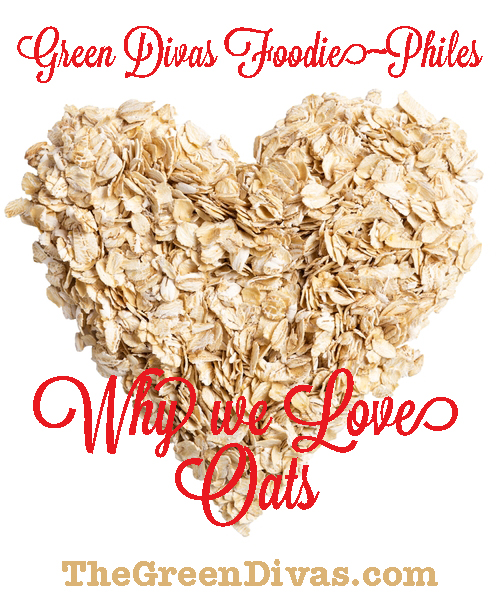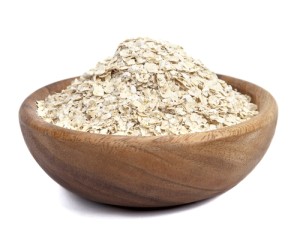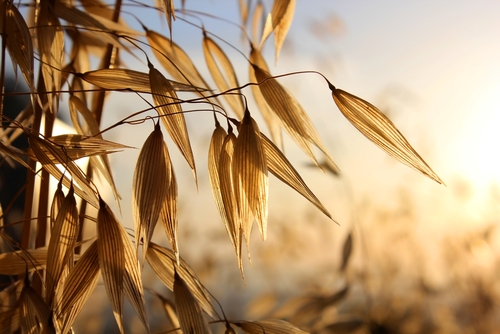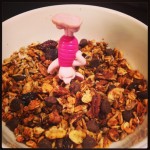 Oats are a pretty amazing food staple. Like its counterparts, spelt, rye and barley, this grain is completely GMO free. Because of the nature of the seeds themselves, oats cannot be grown in a GMO form, which makes them a great ingredient for companies who are looking for non-GMO ingredients to put in their foods. In fact, General Mills caught on to this insight recently — as I’m sure you have all heard, General Mills proclaimed their original Cheerios cereal completely GMO free thanks to oats being the primay ingredient. For this week’s foodie-phile segment, I’ve been asked to look into what makes this gain so outrageously awesome.
Oats are a pretty amazing food staple. Like its counterparts, spelt, rye and barley, this grain is completely GMO free. Because of the nature of the seeds themselves, oats cannot be grown in a GMO form, which makes them a great ingredient for companies who are looking for non-GMO ingredients to put in their foods. In fact, General Mills caught on to this insight recently — as I’m sure you have all heard, General Mills proclaimed their original Cheerios cereal completely GMO free thanks to oats being the primay ingredient. For this week’s foodie-phile segment, I’ve been asked to look into what makes this gain so outrageously awesome.
A Wee Bit of Oat History
Oats were thought to derive from ancient Asia Minor or southwestern Europe before the birth of Christianity. The grain was not as saught after as early wheat or barley, and it is believed that our present-day cultivated oats are actually from a mutated variety of wild oats.

One of the oldest oat grains was found in Egypt in 2,000 B.C. amid the remains of the 12th dynasty, although archeologist believe that these remains were actually weeds.The oldest known cultivated oats were found in Swiss caves that were believed to have been from the Bronze Age.
In 1602, oats were brought to North America with other grains and planted on the Elizabeth Islands off the Massachsetts coast. George Washington was known to have sowed 580 acres of oats as early as 1786. Once the industrial revoltion commenced, the westward shift of oat acreage in the U.S. had migrated to the middle and upper Mississippi Valley, where the majority of the crop’s production still occurs today.
The grain is primarily known as a European and North American crop today since they grow best in cool, wet climates. Russia, Canada, the U.S, Fineland and Poland produce the most oats throughot the world. Scotland is country that has the highest consumption rate of the crop. It must be all of those steel-cut oats needed for that hearty oatmeal those Scots are so famous for.
Oats are Healthy, Hardy and Good for your Heart!
 As I’m sure you have heard throughout your childhood thanks to those Quaker Oat commercials, “oatmeal can lower cholesterol.” This is in fact very true. Oatmeal and oat bran are known to be a great sorce of dietary fiber. This specific fiber is comprised of about half soluble and half insoluble fibers. One of these soluble fibers, beta-glcans has been proven to be an agent that effectively lowers blood cholesterol. When digested, it forms a gel that encases substances related to cholesterol, sch as cholesterol-rich bile acids. This gel encasing reduces the absortion of the cholesterol into the bloodstream. The decrease in cholesterol can also mean it could lower blood pressure. Moral of the story, the Quaker Oatmeal man is right!
As I’m sure you have heard throughout your childhood thanks to those Quaker Oat commercials, “oatmeal can lower cholesterol.” This is in fact very true. Oatmeal and oat bran are known to be a great sorce of dietary fiber. This specific fiber is comprised of about half soluble and half insoluble fibers. One of these soluble fibers, beta-glcans has been proven to be an agent that effectively lowers blood cholesterol. When digested, it forms a gel that encases substances related to cholesterol, sch as cholesterol-rich bile acids. This gel encasing reduces the absortion of the cholesterol into the bloodstream. The decrease in cholesterol can also mean it could lower blood pressure. Moral of the story, the Quaker Oatmeal man is right!
Oats are also thought to prevent breast cancer. This food, like many other grains and vegetables contain many plant chemicals known as phytochemicals which some studies suggest have the ability to reduce a person’s risk of getting cancer. While most of the research has been in regards to breast cancer, the insoluble fibers in oats are also thoght to reduce carcinogens in the digestive tract too.
The phytochemicals in oats also contain a good balance of essential fatty acids, which have been connected to longevity and overall good human health since they do have one of the best amino acid profiles of any grain. Oats themselves are rich in folic acid, biotin, thiamin and vitamin E. They also contain zinc, selenium, copper, iron, manganese and magnesium. A new report suggests that he combination of this vitamin profile helps speed up the body’s response to infection–thus prompting the body to heal quicker. Way to go oats!
 Looking for a great way to incorperate oats into your diet?
Looking for a great way to incorperate oats into your diet?
Check out my Green Diva (and Piglet Approved) granola recipe! It’s not only a great breakfast or snack option, but its also a recipe that can easily be personalized to fit your specific tastes. Instead of including cranberries like me, why not dried apricots? Don’t be afraid to let your stomach make the decisions on what to include in your granola. Enjoy!
Granola Image via Shutterstock
Oat Heart Image via Shutterstock
Bowl of Oat Image via Shutterstock
Oat Field Image via Shutterstock
Pingback: Rabbi Dan on Driving Green in 2014 & Why we Love Oats | Care2 Healthy Living